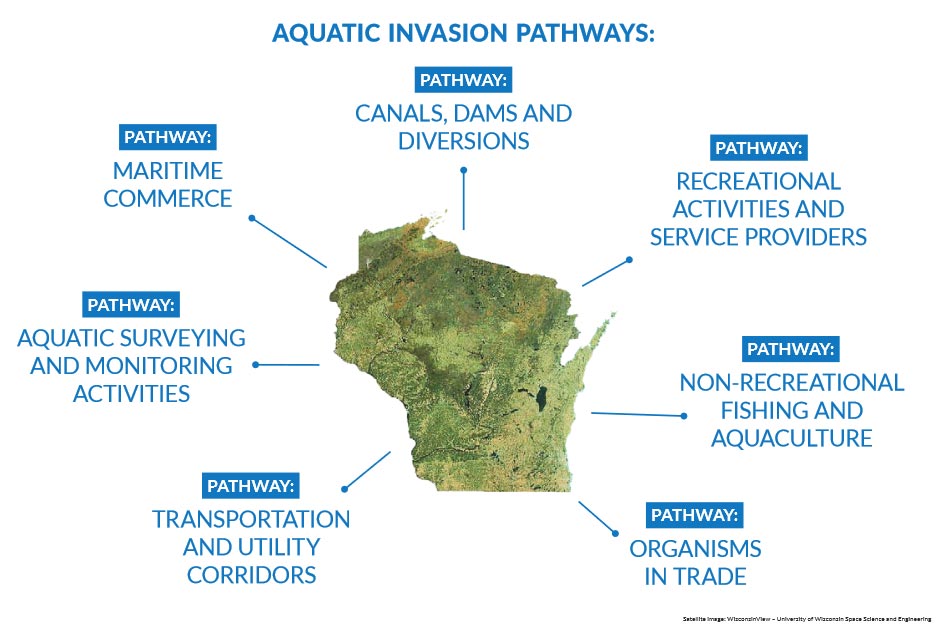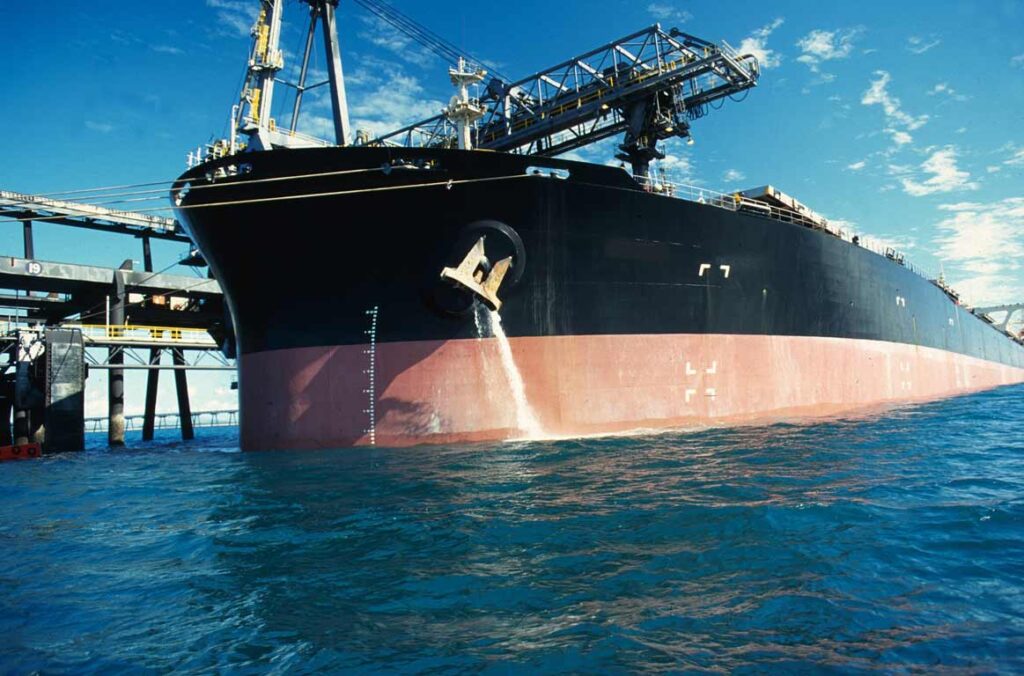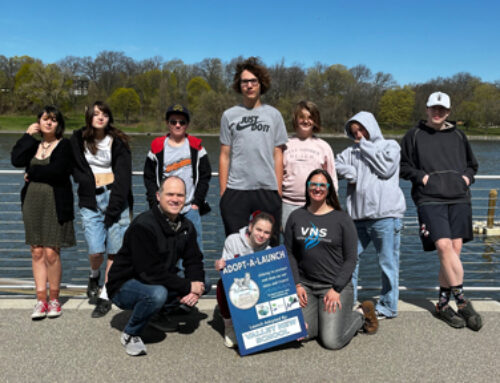Maritime Commerce: AIS Prevention in an Increasingly Connected World
Transport pathways are the means by which AIS have been introduced to and spread across Wisconsin. The number of pathways have continued to grow as new technologies allow for faster movement of goods and services than ever before in history. Every month, we will be putting a spotlight on the different pathways aquatic invasive species can reach new waterways. The second installation of this monthly series focuses on the pathway of Maritime Commerce.
aquatic invasive species can reach new waterways. The second installation of this monthly series focuses on the pathway of Maritime Commerce.
While there is some discrepancy among researchers on the percentage of non-native species established in the Great Lakes that are attributed to ballast water, maritime commerce has been a primary pathway for AIS to reach North America and Wisconsin.
Ballast is used by ships to stabilize vessels but can transport organisms and seeds from port to port. Historically, soil was used for ballast before vessels transitioned to using water. Trans-oceanic ships as well as lakers (ships that stay in the Great Lakes and move commerce) can facilitate the movement of species between continents or even within the Great Lakes themselves. When ships used soil for ballast, large piles of soil would sit at each port and workers would shovel soil on and off the ship. Seeds would often accumulate in these piles of soil and would be transported across oceans and lakes. Following improvement of technologies that would allow ships to pump water into and out of the ship, water was used as ballast as it was easier to load and unload. As water was drawn into tanks from surrounding port water, it was typically untreated before being discharged at the destination port. Organisms such as fish, viruses, mussels, bacteria, etc. would be drawn into the tanks with the ballast water and make the voyage with the ship. While many species could not survive the journey, those that did  had the potential to become established in the destination port. Numerous species of AIS that are established in Wisconsin were first found in the Great Lakes. Once ships were identified as the pathway by which these AIS were arriving in the Great Lakes, regulations and legislation was instituted to halt this invasion pathway.
had the potential to become established in the destination port. Numerous species of AIS that are established in Wisconsin were first found in the Great Lakes. Once ships were identified as the pathway by which these AIS were arriving in the Great Lakes, regulations and legislation was instituted to halt this invasion pathway.
While the Winnebago System is connected to the Great Lakes by the Fox River, the elevation change between the two waterbodies historically stopped many AIS from swimming up river and becoming established. As such the maritime commerce pathway brought many AIS to Wisconsin shores, but it is through other pathways that brought a majority of the AIS to the Winnebago System.
All text from this article is from the Winnebago Waterways AIS Strategic Plan. Sources can be found in the AIS Strategic Plan document. For more information on what the state of Wisconsin is doing to prevent the spread of AIS, check out the Wisconsin AIS Management Plan.
Questions? Comments? Contact Chris Acy, the AIS Coordinator covering Brown, Outagamie, Fond du Lac, Calumet, and Winnebago Counties at (920) 460-3674 or chris@fwwa.org!
Follow the Fox Wolf Watershed Alliance’s Winnebago Waterways Program on our Winnebago Waterways Facebook page or @WinnWaterways on Twitter! You can also sign-up for email updates at WinnebagoWaterways.org.
Winnebago Waterways is a Fox-Wolf Watershed Alliance program. The Fox-Wolf Watershed Alliance is an independent nonprofit organization that identifies and advocates effective policies and actions that protect, restore, and sustain water resources in the Fox-Wolf River Basin.
Photo Credit: Wikipedia Commons, WI AIS Management Plan





